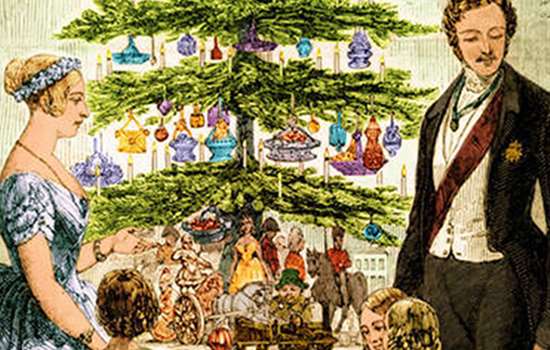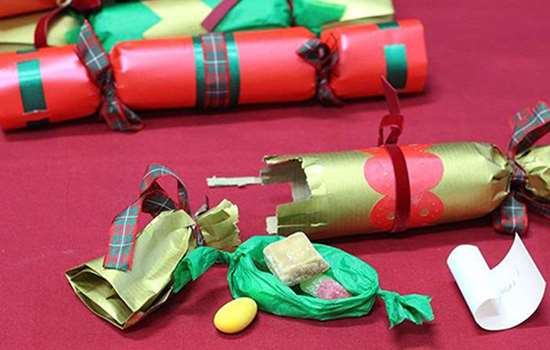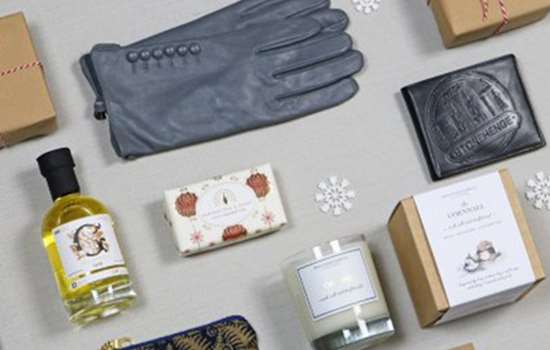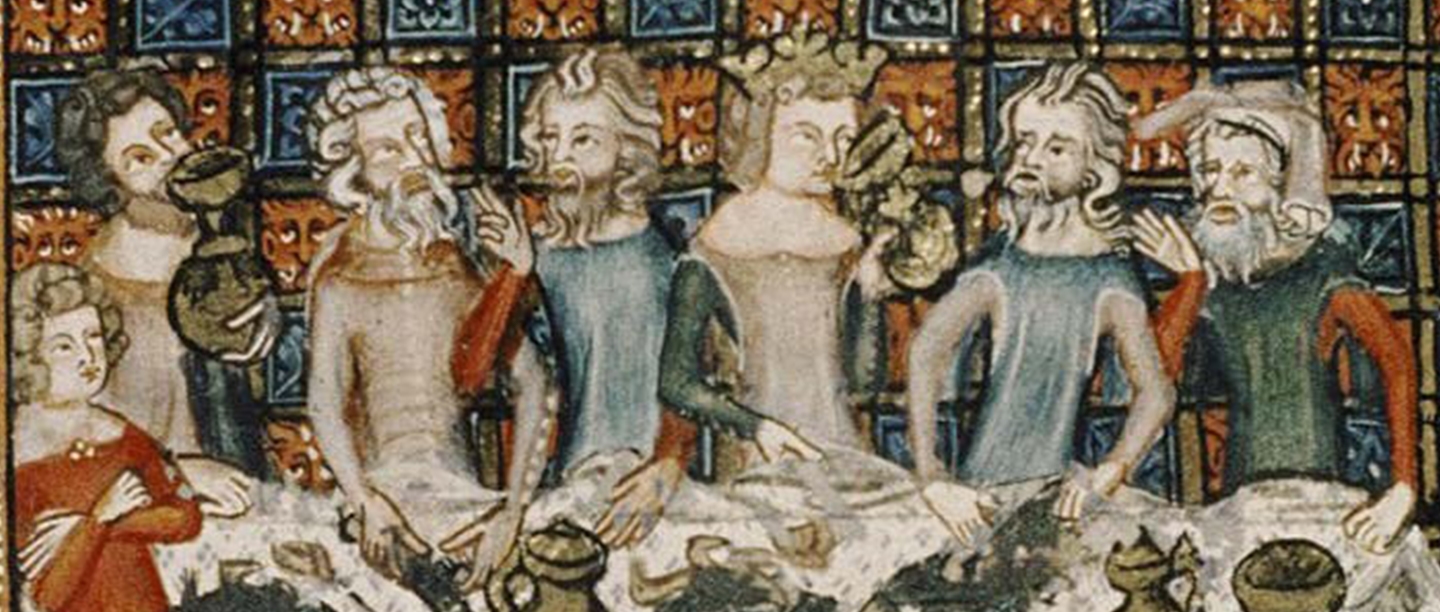1. Peacock
A FEAST FOR THE EYES
Unlike the modern turkey, the peacock was the preserve of the well-off, and was not simply roasted whole. Rather, the skin of the animal was carefully removed, preserving its ostentatious feathers, and this was set aside. The carcass was then skewered for roasting, its neck being fixed upright during the roast to allow for a life-like presentation at service. When the dish was served, usually by a woman, its skin and feathers were re-attached to convey the full impressive array of the living bird. The dish appears to have been as important for its display as for the flavour of its meat (which was derided in Old English sources), though the skin could also be stuffed with other foods.
The peacock had a special place in elite cuisine, not just in relation to Christmas and not simply because it was a non-native exotic animal. It was the subject of one of the most well-known medieval romances, Jacques de Longuyon’s 14th-century Vœux du paon (‘Vows of the peacock’), in which men and women took turns making courtly and honourable, if often boastful, promises, relating to themes like obedience, warrior prowess and love, over a peacock.
2. Boar's Head
THE CENTREPIECE OF THE SECULAR FEAST
The boar's head was the heart of the medieval feast for England's elite. As a desired target of the great medieval hunt, the boar was considered difficult to catch and kill, and therefore worthy of esteem; indeed, boar in royal forests were protected by specific laws since at least the 12th century. Boars had a reputation as fierce and deadly prey; in Arthurian legend, the king chased the boar Twrch Trwyth across several kingdoms before finally killing him.
The boar’s head was not just a roasted head. Rather, it was carefully prepared over the course of some weeks before the actual feast. It’s not clear exactly how it was prepared – and it’s likely there were many different recipes – but it seems most likely that it was served as the elaborate exterior of a more familiar pork pie. Food historian Peter Brears has outlined an approach to its preparation, using a pig’s head. The skin was removed from the skull, and the eyes, nose and mouth were cleaned and sewn shut. The skin was stuffed with cured meat, fatty bacon, salt and spices placed in alternating layers from the bottom up; the whole was then sealed and wrapped in muslin, and boiled on a bed of carrots, parsnips and onions, being left to gently simmer for five hours; it was then left to cool overnight.
To serve, it was placed on a large dish, the head covered with warm lard covered with black ash, to simulate a boar’s black fur; its ears were kept erect in a lifelike fashion with sprigs of rosemary; tusks were inserted into its mouth for the same reason; if served in honour of someone, a small shield with the appropriate coat of arms was added to its forehead. It was served like a cold pork pie, and very often alongside Brawn (see below). As early as 1170 Henry II gladly and proudly served it to his son as sewer (ceremonial serving position overseeing meals), replicating a tradition that was clearly ancient even then. In the 15th century at least, its emergence from the kitchens occasioned a song - The Boar's Head Carol.
3. Brawn
NO HEAD-CHEESE HERE
Contrary to what you might expect from how ‘brawn’ is understood today, in medieval England it was one of the most favoured cuts of meat. It was usually a rich and dark cut, quite fatty, from boar or sometimes poultry. In order to prepare the dish, the fresh meat was deboned, bound with string, and then boiled until very soft. It was then drained, cooled, and preserved in ale, cider, wine or vinegar. Once ready for serving, it was presented in thick slices to be dispensed at the table.
The boar’s head was usually served with boar brawn, taken from the animal’s shoulders. The 14th-century author Geoffrey Chaucer’s poem Parliament of Fowls makes a connection between boar brawn and Christmas: “Before him stands the brawn of tusked swine / And “nowel” [Christmas] crieth every lusty man.” To a certain extent, the medieval understanding of ‘brawn’ may be reflected in the expression ‘more brains than brawn’, where having a profusion of thoughtfulness and intelligence epitomised by ‘brain’ is contrasted to the pre-eminence of physical strength and imposition represented by ‘brawn’. As with the Boar’s Head, Brawn was favoured for the prestige of the animal from which it was made, and featured in Christmas feasts in the secular households of the well-off in medieval England.
4. Pies
EAT THE FILLING, CHUCK THE REST
Pies were not specific to Christmas, but appeared as part of the menu in Christmas meals in significant quantities in late medieval England. The pastry was often a vehicle for showing off as much as a means to deliver food. In well-off secular households, the pastry proper was not eaten, but rather the contents consumed and the soggy crusts either disposed or perhaps given to paupers who waited at the gate of the manor or castle. Pies contained all sorts of contents: apples, pears, beef, lamb, pork, eggs, fowl, bone marrow, cheese. The contents were often entirely cooked or near-ready before being warmed in the pastry oven before serving; it didn’t matter if the pastry itself wasn’t cooked through, as it wasn’t consumed. They could be open or closed, and could be very substantial, some reaching over half a meter in diameter. The ‘Yorkshire Christmas Pie’ is a modern survival of a ‘great pie’, whose contents inside the pastry were an outer layer of spiced finely minced meat, with a filling of parboiled poultry, game and dried fruit. The traditional Christmas mince pie also originally contained minced meat and suet.
The shapes of pies were sometimes intended to evoke the animals they contained, such as rabbit, fish and eels; ostentatious pie decoration probably appeared at Christmas. Pies made to look like they were on fire had little cones of pastry glazed with egg yolk to simulate fire; more elaborate pies, ‘castelettes’, were crafted to emulate the tower of a castle. Some covered pies were plain, but had feint relief of the animals inside them, like an eel or fish.
5. Drink
WINE FOR THE WEALTHY, ALE FOR ALL OTHERS
There was no medieval equivalent to eggnog, though records do testify to an earlier version of a contemporary festive beverage, spiced/mulled wine: this was called hippocras, and was consumed with wafers at the end of meals, though not exclusively during Christmas.
In late medieval England, wine was the preserve of the wealthy. It was imported from wine-yielding parts of France, either directly or via intermediaries, including taverns. During the Christmas period, it was drunk with great enthusiasm, though the volumes reflected in the surviving evidence probably suggest that there were many more people present at the feast than usual, rather than suggesting there was an endorsement of drunkenness.
In 1296, 2½ sesters of wine were consumed on Christmas day at Goodrich Castle: this amounts to between 84 and 120 modern wine bottles. Apart from the spiced wine hippocras, other kinds of wines served included red, white and sweet. For the most part, these would not have been as alcoholic as contemporary wines.
For most festive revellers, however, including those outside the privileged occupiers of high tables in the kingdom’s castles, abbeys, great houses and manorial centres, the choice of beverage was limited to ale, and from about the 16th century, beer. Ale was made constantly across late medieval England, with a range of tastes and alcoholic strengths (from quite mild to strong) being represented. As was the case with wine, Christmas and the other major points of the Christian calendar marked by feasts represented the opportunity to enjoy ale in greater quantities and with friendly company.
MORE TO EXPLORE
-

Victorian Christmas Traditions
Many of today's favourite Christmas traditions were popularised by Queen Victoria and the royal family in the 19th century. From cards to crackers, discover the Victorian origins of some of the traditions practiced across the country today.
-

Family Christmas Crafts
Set your festive season off with a bang by making your own traditional, Christmas crackers with our step-by-step guide. They're simple enough for kids to have a go, and we have a range of other creative things to do too - including Christmas cards and decorations.
-

Shop Christmas
Although Christmas may be a little bit different this year, we still have a range of gifts to make your friends and family feel extra special. Browse our shop for a feast of festive inspiration.

